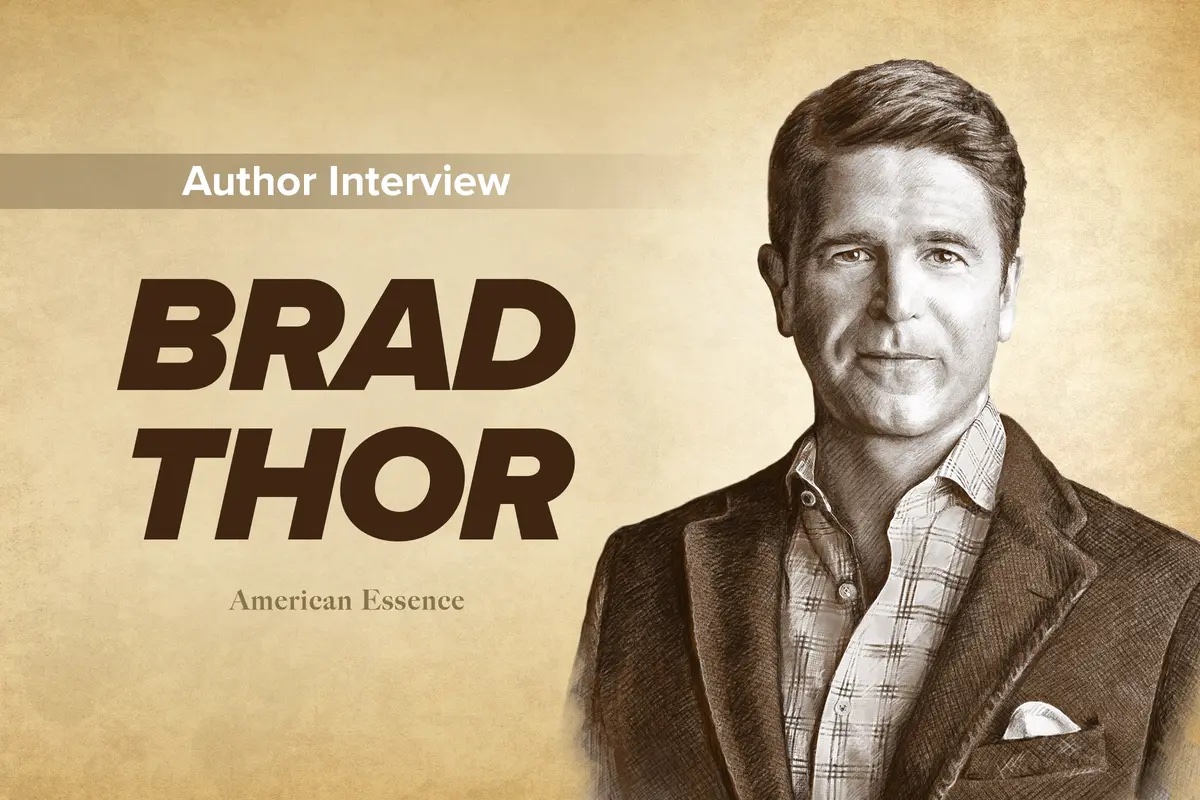Bestselling author Brad Thor, who writes a thriller every year, is known to tackle emerging security topics and create novels characterized by assiduous research and imaginative plots—what he calls “faction.” This wasn’t lost on the U.S. government, which tapped him to join its Analytic Red Cell program to come up with plausible scenarios involving threats and attacks on the United States.
With his latest novel, “Dead Fall,” he took a different tack, writing about the Ukraine–Russia conflict—as it was happening. We spoke to Mr. Thor about his recent book as well as his views on America’s role in the world.

American Essence: What was your experience writing this book in real time?
Brad Thor: So it was interesting. There was a certain amount of trepidation on my part that the headlines might get out in front of me, as opposed to me being in front of the headlines, which is what I like to do. But I have to be honest with you, I grew up reading fabulous thrillers that were set in World War II. I always wished that there was a similar setting that I could place my hero Scot Harvath in, and when the war in Ukraine broke out, I thought, OK, this is my opportunity to do my own version of some of my favorite movies like “Saving Private Ryan” or “Fury” with Brad Pitt, or the HBO series “Band of Brothers.”
There were very definitive bad guys. There was lots of what we call the fog of war, lots of confusion, lots of difficulties with getting men and matériel to the front lines. It seemed like the perfect setting to put my hero. I like to put him into very difficult situations without a lot of support. I didn’t want to send him into the story with an army right behind him. I wanted to send him in as poorly equipped and undermanned as possible so that that would raise the stakes and the tension. So Harvath had to go by himself. He had to join the Ukrainian international Legion, so that if he got killed or captured, the United States could say, “We have no idea why he was there.” That was the jumping-off point for “Dead Fall.”
What we’re seeing here in Ukraine is very much an echo of the run-up to World War II, particularly when the Republic of France, fascist Italy, and the United Kingdom via Neville Chamberlain decided to allow Hitler to take a piece of Czechoslovakia called the Sudetenland. [They] thought, “Well, if we let Hitler have this, then that’ll be the end of it.” And what do we all know from history? It wasn’t the end of it. It only encouraged him. And that’s exactly what’s happened with Putin. In his 2014 invasion of the Donbas in eastern Ukraine, he said he was there to protect ethnic Russians. With my book, I saw all of these parallels from August to October of 1944. Hitler sent one of his worst SS brigades into Poland, and some of the most horrific, the most terrible war crimes of World War II were committed by the SS brigade, so we were seeing a lot of echoes of that with Russian troops, and particularly the Wagner Group, part of the mercenary force that Putin was using in Ukraine as well.

AE: There is a humanitarian aspect to this book. It involves rescuing a U.S. citizen and orphans. But what’s also at stake are Ukrainian cultural treasures and artwork—and as you mentioned in the book, the identity of a nation. How did that idea come about?
Mr. Thor: The Nazis looted treasure throughout Europe. There were only so many things that the Louvre was able to hide and get away before the Nazis came into Paris. A genocide of a culture exists on many different levels. Obviously, when we hear the word genocide, we think of killing people, and that is absolutely the worst. There’s also kidnapping the children and killing the children, consuming them, if you will, pulling them into your culture, which the Russians have done in Ukraine. A final part of genocide is to wipe out any trace of the culture and history, particularly their art. I was inspired by the movie with George Clooney and John Goodman, “The Monuments Men,” where they were trying to rescue pieces of art. That was another pop culture touchstone for me. And I love the book “All the Light We Cannot See,” which was a Pulitzer Prize winner. It starts with a young girl and her father who works at the Louvre and they have to get out of Paris because the Nazis are marching on Paris.
So this idea of art and what the Russians are doing in Ukraine, I read lots of articles leading up to the invasion about how different museums throughout Ukraine were trying to pack away and hide their precious works of art because they knew Putin was going to try to steal them.
…
(This is a short preview of a story from the Nov. Issue, Volume 3.)




